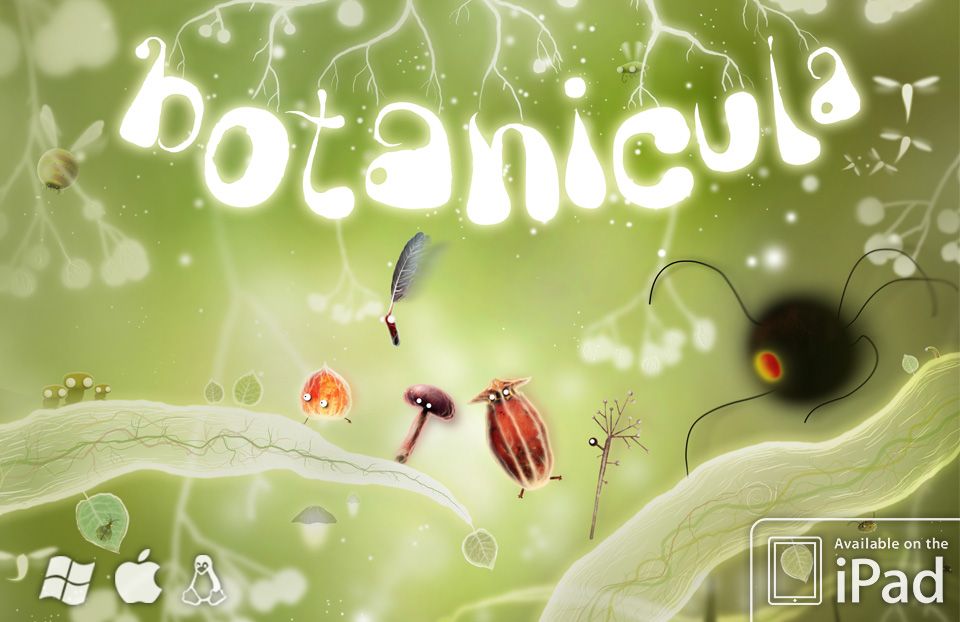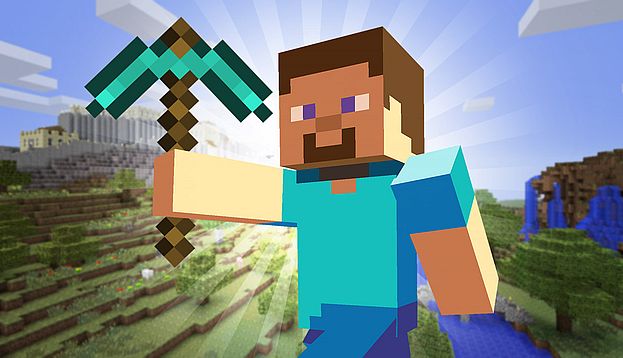Independent game development has gone from a rare, curious thing in the 1990’s to a burgeoning part of the game business in the 2010’s. The shining example of success is Minecraft, which began as a quirky game worked on by one creator, and ended up a few years later as the target of a $2.5 billion acquisition by Microsoft.
Indie developers have come into their own on platforms like Kongregate on PCs, the massive Steam digital distributor, and of course on mobile platforms. Even consoles, traditionally the bastion of high-cost game development, have welcomed indie developers with open arms. Microsoft, Sony and Nintendo are all embracing indie development on their consoles, making it far easier and less expensive than it ever was before to create games on consoles.
Indie games are still a breed apart from the traditional AAA development, though, even while some indie games are generating revenue numbers any AAA publisher would be proud of. There’s clearly some things AAA publishers can learn from indie developers, and here are five important trends among indies that AAA publishers and developers should seek to learn from.
Risk-taking
This is something that comes naturally to indie game developers, for whom the very act of becoming an indie developer is a risk. Many give up good jobs to seek their fortunes as an independent game, or leave positions at gaming companies to bring their own vision of a game into being. Everything an indie developer does is typically a risk, so it shouldn’t be a surprise that indie developers take plenty of risks in game design as well.
Certainly there’s plenty of me-too games being developed by indie developers, but those are the indie developers who don’t see a huge success. The indie game developers that have attained a measure of success have typically done so through taking chances with game design. Unusual play styles or game mechanics, off-beat subject matter, mixing genres of games — all of these tactics and more have been tried as huge numbers of indie developers strive to create something that fascinates enough people to generate an living wage.
The lesson for big game publishers and studios is this: The biggest risk of all is to take no risks. Eventually, that strategy leads to boredom on the part of the audience, who will wander off to find more interesting and innovative games. The most successful games are the ones that really pioneer a new playing style or genre, Could Minecraft have been the product of a big studio That hardly seems likely. Certainly it’s safer to create new versions of bestselling franchises than to create something new, yet eventually creating new versions of old games begins to lose steam (witness the gradual sales decline of Call of Duty from year to year).
Granted, spending tens or even hundreds of millions on a brand new game is a huge risk. But indies can try out interesting new concepts for a fraction of the cost. Large game studios and publishers are filled with creative people who must have plenty of ideas — why not let them build a few in-house, inexpensively, and try them out on digital platforms That’s the logic that fueled Ubisoft’s Child of Light, and it seems to have worked out well. Try out a new concept inexpensively, and if it proves popular then pour more money into it.

Graphics experimentation
While AAA games, by and large, try for the most realistic graphics possible, indie developers usually stay far away from that for one simple reason: Cost. It can cost tens of millions of dollars to create beautifully rendered 3D worlds, and more millions to make sure they animate at high speed. That’s simply not possible on the usual indie game budget, so they are forced to get more creative. The result is that indie games have an enormous variation in graphic style.
While it may get wearisome to see yet another indie showing its coolness by using retro 8-bit graphics, it’s also true that producing those graphics is a great savings. Those savings can be put into other areas of the game, like design, programming, marketing and more. The great advantage, though, comes in giving an indie game a distinctive look, like Transistor or Super Meat Boy or Botanicula or a thousand others. Once again, Minecraft stands out as being quite crude in its graphic presentation, te the game is so powerful it overcomes any thoughts of the crude graphics. Now Minecraft graphics are part of the game’s signature look, and have become a great marketing tool. If Minecraft teaches us anything, it’s that graphics are not the only thing that sells a game — and not even the most important thing.
Some AAA studios have given their games a distinctive, non-photorealistic look. Think Sunset Overdrive or Borderlands or (going back a ways) Okami, games that aren’t striving for scenes that look real. These games are creating a fantastic graphic style with a distinctive look, and it helps the games appeal to a wide audience. And, not coincidentally, aids in marketing as well.
Exploring new gameplay
Try imagining a game like the Binding of Isaac or Johann Sebastian Joust (part of Sportsfriends) coming along from a large developer or publisher… it’s hard to think of good examples. Portal, perhaps, which explored interesting puzzles. Certainly the Wii expanded gameplay, as did Guitar Hero and Rock Band. But if you leave aside hardware that promotes new gameplay, it’s pretty clear that if you’re looking for something different indie games are where you find it.
Again, it’s not to be expected that major publishers or studios will risk huge amounts of money on brand new gameplay ideas, not without some indication that it’s a sellable gameplay. Certainly watching to see what indie games are succeeding with unusual gameplay is something everyone already does. We’re seeing some of Minecraft’s concepts being built into major releases from big publishers, though as yet nothing has resonated in anywhere near the same degree.
It does seem like big publishers or studios could make their own low-cost gameplay experiments, and then be poised to take swift advantage if the idea proves to be popular. The tough part is for a large company to commit to this sort of budget, and not expect to make a lot of money. It’s not intended to be a profit center; it should be thought of as R&D that can partially pay for itself.
Doing more with less
This is something indie developers are always forced to do. It sounds painful and difficult, and it is — yet severe resource restrictions lead to amazingly creative solutions. If you can’t afford to build a huge 3D world, maybe the game will work in 2D. Not enough time and money to animate everything Design the game so fewer objects need to be on screen at once. Can’t work for months to create 40+ hours of gameplay See if you can get the essence of the experience in a couple of hours, and then charge far less for it.
Designing under constraints of time, budget, or technology can lead to interesting choices that may be popular. Shortcuts can lead to new and interesting places, and the journey may turn out to be lots of fun. But if you never constrain your development team, they may never be looking for unusual solutions to game design problems.

Open development
The relative openness of many indie games is perhaps the greatest difference, aside from budget, that separates them from big-budget products. Crowd-funded games are, by necessity, open projects that involve the community from the beginning. The fans who support a game become part of the design process, and this can lead in very different directions than originally anticipated. Chris Roberts will tell you that he thought Star Citizen was mostly going to be about ship combat, but after surveying the backers he found the exploration was the part of the game they were most interested in by far — and this led to a significant shift in development resources.
Big publishers and big developers are used to operating under a cloak of secrecy about titles in development, with very little known in advance except the title and the general nature of the game. Some information will be carefully released as development proceeds, with most of the info coming right before launch. The problem with this, of course, is that the audience may not really like the game’s ultimate direction, or major bugs may have crept in unnoticed. A quick look at the dismal launches of several very high-profile AAA games in 2014 should show the dangers of secret development.
Publishers and major developers should rethink the whole notion of utter top secret game development, and look at the advantages provided by an open development process. Chris Roberts has succeeded in taking an effort originally intended to raise a couple of million dollars and turned it into a $70 million juggernaut, rolling towards $100 million by launch time.
Opening up development becomes a terrific marketing tool, as well as validation of the audience size and interest. It also helps in finding the key parts of the design that resonate with the audience, and finding and fixing bugs. The danger has always been perceived that your competitors will be able to copy what you’re doing… but everybody is already doing that to successful games. That’s why there are so many FPS games, and RPGs, and MOBAs… and so on. Yet it’s very difficult and expensive to copy a big project; Electronic Arts ended up shutting down its MOBA game, for instance. Everyone knows what Grand Theft Auto is like, but it’s proven damn hard to copy.
Summary
Big publishers and developers have plenty of advantages, but they can profit by looking at what indie games are doing. Using some of the ideas and approaches of indie developers could revitalize a tired franchise, or help create a bold new one. Just keeping on keepin’ on is not a viable strategy when the market is growing and evolving so rapidly. The indie game market is a huge source of evolving ideas, and AAA publishers and developers should seek to add some of those new genes to their own DNA.


[…] und neu veröffentlicht aus dem Englischen Original von Steve Peterson auf […]